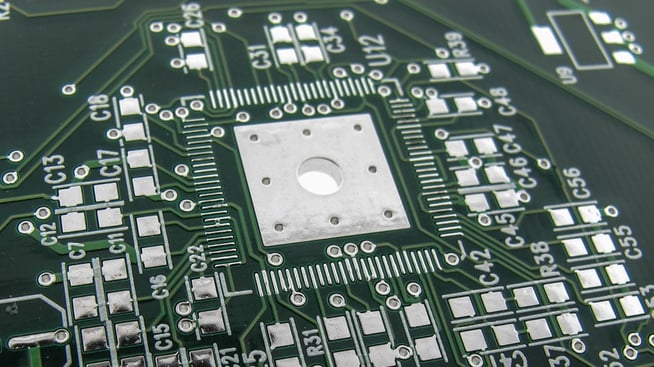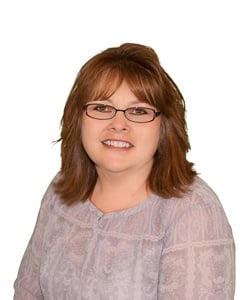Hot Air Solder Leveling (HASL) has always been the main staple of PCB surface finishes. In the late 1980s, 60/40 tin-lead reflow started to phase out of processes and was replaced with Hot Air Solder Leveling. HASL finish, the long running reliable surface finish, is still used today in military, aerospace, medical, and other applications.
The Evolution of Hot Air Solder Leveling
The long history of HASL representing an excellent solderable finish for printed circuit boards has kept it alive in the global PCB market, both domestic and offshore, even though it contains lead (Pb).
We recognized since the beginning of EU RoHS in mid-2006 that HASL was here to stay. Longevity and reliability combined with the trust of customers meant finding a solution to keeping the process alive, which meant trying to remove the lead was going to be a necessity.
Given that PCBs are in everything from industrial applications to toys, the safety concern was obvious. Once the health risks from prolonged exposure to lead for children and adults were established, getting lead out of products became the focal point for the electronic manufacturer.
Originally the expectation was that lead would be entirely removed from everything we touched.
Fast forward to present day, and we've come to the realization that lead may never be 100% totally gone from all products. However, choosing a PCB surface finish that works best for you and your process while still keeping the environment safe is has become a much more practical solution.
What About Lead Free HASL Finish?
The Lead Free Version (LFH) of HASL PCB finish became the most frequently considered surface finish next to immersion gold early in the process of safer finish alternatives. So, why didn't lead free HASL become the new standard instead of simply becoming a hassle for manufacturers? Due to the complicated nature of applying a LFH finish, some circuit board manufacturing facilities may need to outsource this process.

PCB with HASL / Lead Free HASL Surface Finish.
The chemistry involved in the makeup of LFH has changed over the years, as have the applications. Vertical and horizontal applications both initially had the same issue as HASL; a pooling, non-flat finish with a somewhat foggy appearance in areas of the PCB.
Pre-trial combinations of the LFH gave the finish a bad review. The combination of tin, silver, and copper alloy originally had poor results at the processing level, leaving behind a bumpy uneven coat that was dull and unattractive as well as having a poor performance in assembly. Removing the silver, changing the tin-copper, and tweaking the manufacturing process has allowed for a better, smoother surface coating than originally found. With this promising development in application, demand has increased, as well as brought more LFH in house and decreased time to customer product delivery.
Pb Free HASL Processing Challenges
LFH needed to be applied at a hotter temperature. On the first pass, the surface is left grainy and dull. Once the second pass has been added, both surface as well as appearance improve to a shiny, much flatter, much smoother, even coat. However, excess heat from two dips in the molten solution leaves copper on the hole walls, reducing the copper below the acceptable limits per IPC standards. This forced another process change once again adding a stain to the LFH finish.
After a lot of subsequent changes to chemistries and processes, lead free HASL is now a stable surface application to use on PCBs. Improved process eventually produced a consistent means of using lead free HASL surface finish, dramatically reducing the hassle experienced within the PCB manufacturing industry.
LFH Decrease In The PCB Industry
So after all the improvements, why does LFH still seem to be the least used surface finish in the industry today?
ENIG finish (Electroless Nickel Immersion Gold), OSP finish (Organic Solderability Preservative), and even immersion tin and silver all took the lead in surface finish popularity for manufacturing. While Pb Free HASL finish became more possible, it still remains a more complex process than other finishes. As technology continues to develop, real estate on surface becomes tighter and footprints decrease, making it harder for LFH to establish itself as the go to surface treatment.
Summary
Lead Free HASL has improved viability in terms of process, but it still has some groundwork to overcome when competing against other surface finishes. However, this once not-so-popular finish has consistently been gaining popularity among customers, prompting manufacturers to give it a greater consideration as a main staple up against immersion silver, OSP, and immersion tin.
Video: Hot Air Solder Leveling (HASL) Explained: How It Protects PCB Finishes
Key Takeaways
- HASL remains a reliable and widely used PCB finish: Despite being one of the oldest options, HASL is still common in military, aerospace, and medical applications due to its proven durability and solderability.
- Lead-free HASL emerged as a RoHS-compliant alternative: Lead-free HASL was developed to replace traditional leaded HASL, but its adoption was slowed by early challenges with poor surface quality, uneven coatings, and complex processing.
- Processing improvements enhanced lead-free HASL performance: Modifications to alloy composition (removing silver, adjusting tin-copper blends) and refining application techniques now produce smoother, flatter, and more consistent finishes.
- Challenges remain for widespread lead-free HASL adoption: Higher application temperatures, more complex processing steps, and risk of reducing copper thickness during reflow make lead-free HASL less appealing compared to simpler finishes like ENIG, OSP, or immersion silver.
- Lead-Free HASL is slowly gaining traction: While not yet as popular as other lead-free finishes, lead-free HASL has improved enough in appearance and reliability to become a more viable option for manufacturers and customers seeking an alternative to ENIG or OSP.

















